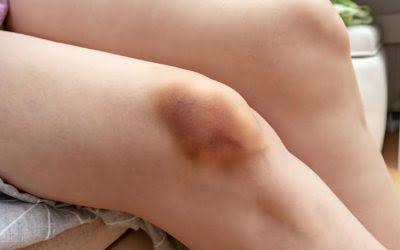A study conducted in 2015 showed that blocking TLR4 function most of the neuroinflammatory effects produced by ethanol were diminished [104]. In another study, adolescent mice that consumed ethanol intermittently (3 g/kg) for two weeks, showed that this consumption pattern leads to an activation of TLR4 signaling pathways, an up-regulation of cytokines and proinflammatory mediators, in addition to synaptic and myelin alterations. TLR4-deficient mice prevented such neuroinflammation, synaptic and myelin alterations, as well as long-term cognitive alterations [105]. Much progress has been made in elucidating the relationship between alcohol consumption and immune function and how this interaction affects human health.

The latter was used to identify any publication not indexed in MEDLINE and covered around 80%–90% of English scientific articles available online [8]. Keywords used were “inflammation”, “innate immunity”, “immune cells”, “cytokine”, “neutrophil”, “sepsis”, “systemic inflammatory response syndrome(SIRS)”, “toll-like receptor (TLR)”, “acute alcohol”, “acute ethanol”, “chronic alcohol”, “chronic ethanol”, and “infection”. There was no limitation on time of publication, however, emphasis was put on more recent work. Furthermore, retrospective and prospective clinical studies were included to link experimental work to observation in patients. The respective study design is mentioned as well as the investigated cells/compartments and limitations to help the reader classify the given information. The interaction between the liver immune system and the microbiome, under normal health conditions, is limited.
What is alcohol intolerance?
Thiamine, also known as vitamin B1, contributes to the activation of T cells, suppresses oxidative stress-induced NFκB activation in macrophages, and serves as an anti-inflammatory factor (Manzetti, Zhang et al. 2014). Antigen-specific responses are decreased in folate-deficient humans and animals (Dhur, Galan et al. 1991). Potential target points for (i) acute alcohol and (ii) chronic alcohol in inflammatory tissue. Neutrophils and monocytes migrate towards the site of inflammation via adhesion molecules like P-selectin and intercellular adhesion molecule (ICAM), which can be induced by activated macrophages. This process of transmigration is further enhanced by secretion of chemokines and PAMPs as well as DAMPs.
Recently, it was reported that a single episode of binge alcohol consumption in alcohol-experienced human volunteers (men and women) initially (within the first 20 min) increased total number of peripheral blood monocytes and LPS-induced TNF-α production when blood alcohol levels were ~130mg/dL. However, similarly to the in vitro studies described above, at 2 and 5 hours post-binge the numbers of circulating monocytes were reduced and levels of antiinflammatory IL-10 levels were increased (Afshar, Richards et al. 2014). In conclusion, alcohol in its acute use is a potent anti-inflammatory agent and ameliorates the TLR4-mediated pro-inflammatory cytokine response. In contrast, chronic alcohol consumption increases the sensitivity of TLR, subsequently leading to the higher expression of proinflammatory cytokines (e.g., TNFα).
How can I learn to live with alcohol intolerance?
Early studies already had indicated that chronic alcohol abuse (i.e., for 12 to 15 years) resulted in reduced numbers of peripheral T cells (Liu 1973; McFarland and Libre 1963). More recent studies confirmed this observation and showed that the lack of lymphocytes (i.e., lymphopenia) was as severe in people who engaged in a short period of binge drinking as it was in individuals who drank heavily for 6 months (Tonnesen et al. 1990). Interestingly, abstinence for 30 days was sufficient to restore lymphocyte numbers back to control levels (Tonnesen et al. 1990). Similar findings were obtained in animal models, where the number of T cells in the spleen decreased in mice fed a liquid diet (i.e., Lieber-DeCarli diet) containing 7 percent ethanol for as little as 7 days (Saad and Jerrells 1991) or 6 percent ethanol for 28 days (Percival and Sims 2000). Likewise, adult male Sprague-Dawley rats consuming liquid diets containing up to 12 g ethanol/kg/day for 35 days exhibited significantly reduced absolute numbers of T cells (Helm et al. 1996).

These mechanisms involve structural host defense mechanisms in the gastrointestinal and respiratory tract as well as all of the principal components of the innate and adaptive immune systems, which are compromised both through alcohol’s direct effects and through alcohol-related dysregulation of other components. Analyses of alcohol’s diverse effects on various components of the immune system provide insight into the factors that lead to a greater risk of infection in the alcohol-abusing population. It is also critical to take into consideration that the effects of ethanol on immune function in vivo could involve the actions of its primary metabolite, acetaldehyde. Therefore, more studies looking at the effects of ethanol metabolites in vivo are needed. Acetaldehyde has also been shown to affect NFκB-induced cytokine production in various liver cells.
Can You Be Allergic to Alcohol? Yes, Here’s What to Know About Alcohol Intolerance
They may be able to give you prescriptions, provide referrals to therapists, or talk to you about treatment programs. It can also lead to complications after surgery and poor recovery from injuries such as broken bones. Those who have any of the known risk factors for COVID-19, like heart disease or diabetes, should drink even less. The World Health Organization (WHO) and U.S. surgeon general have warned people to avoid drinking too much alcohol during the COVID-19 pandemic. That said, evidence also shows that even smaller amounts of alcohol can affect the immune system. “With COVID-19, alcohol is likely to interfere with an individual’s ability to clear SARS-CoV-2 and cause people to suffer worse outcomes, including ARDS, which commonly results in death,” Edelman said.
But the hallmark symptom of alcohol intolerance is flushing of the skin of the chest, neck and face. People often confuse alcohol intolerance and alcohol allergy, but they aren’t the same condition. This disease is characterized by the acute onset of hypoxaemia, bilateral infiltrates on chest X-rays and no evidence of left ventricular heart failure. 3The HIV (or SIV) set point is the stable viral load that is established in an HIV-infected person after the initial phase of the infection, when the person’s immune systems tries to fight the virus. The higher the viral load of the set point, the faster infection will progress to full-blown AIDS. A good place to start to receive treatment for alcohol use is to talk to your healthcare provider.
Alcohol and HIV Effects on the Immune System
But the investigators were surprised to find that the monkeys deemed as moderate drinkers demonstrated an enhanced vaccine response. Alcohol intolerance is a problem with the specific enzyme that helps your body metabolize alcohol. Micro- or macronodular fibrosis in the liver, which can does alcohol suppress immune system result from chronic alcohol abuse. Gut microbiota are able to produce various of the aforementioned metabolites that act on enteroendocrine cells, the vagus nerve or by translocation throughout the gut epithelium into the systemic circulation and may have an impact on host physiology.